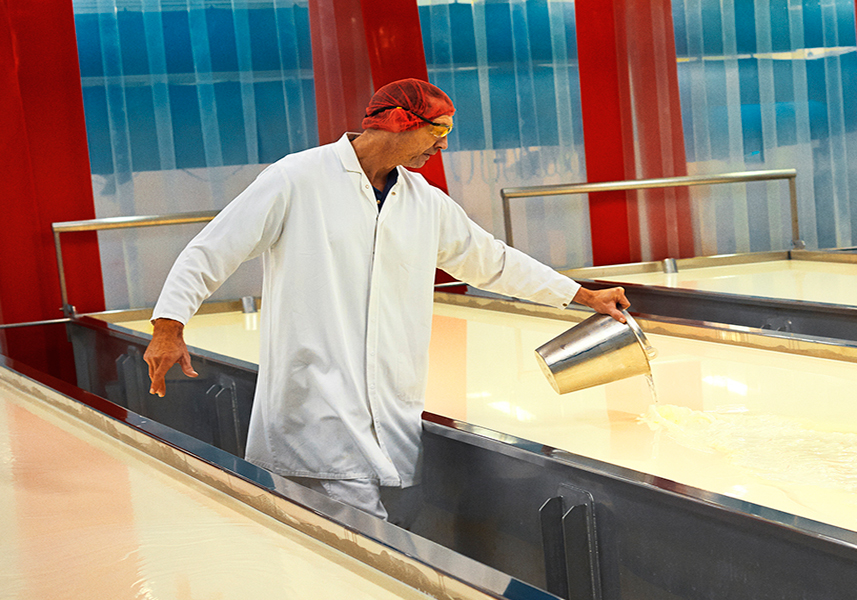In our farmer-owned dairy cooperative, milk is the essence of our value chain. It’s the capital that our farmer-owners inject into the business every day and the only commodity that we proudly pay as much as possible for, as our performance is primarily measured through the price of milk that we are able to pay to our farmer-owners.
To us, wasted milk is not only a financial blow. It’s a waste of all the energy that our farmers have put into producing it with the highest standards, a waste of value to our customers and consumers and a waste of nutrients that should have fed someone rather than being lost.
So we cry over spilled milk at Arla. And within Arla’s operations, with more than 10,000 farms where we collect over 38 million kilos of milk every day to be processed through our 60+ dairies, we are particularly obsessed about reducing all sources of waste, from the milk collection point to the final finished goods delivery point. A few drops lost during the day or products scrapped here and there are adding up by the end of the year to big numbers in both volumes and financial terms.
This obsession is obviously not new to Arla, but we are now going for the higher hanging fruits. Three measures have proven important to us in doing so.
1. Get better visibility
Identifying and measuring waste is a crucial first step to prioritise resources and drive change. We knew how much milk, ingredients and packaging materials went in to our operations and we knew how much finished products came out, but we had to better understand where and how some got wasted throughout our production and distribution processes.
Having the right data at the right granularity is essential to do so, which is why we have invested heavily in data collection and management, leveraging big data capabilities and advanced analytics to get better visibility and to increase our responsiveness. Since 2018, this allowed us to implement new powerful tools and reports for optimising material and finished goods waste.
Subsequent reviews now form part of our regular performance review meetings and other key forums. Furthermore, a cross-functional team with reps from Production, Quality, Logistics and Finance are working together on continuously improving the data integrity and transparency. Our ambition being to eventually track and optimise material and finished goods waste real time.
2. Be more precise when forecasting and planning
Waste is closely interlinked with sales forecasting, campaigns, new product launches and customer collaboration. So reducing waste effectively also includes an active and effective collaboration between the commercial and supply chain teams in planning and forecasting.
And here again, data transparency is crucial. The more insights we have, the better we can be in both forecasting and responding quickly and effectively to unforeseen situations. And the less products will be wasted throughout the Supply Chain. Hence why we are investing in demand sensing, advanced planning tools and advanced warehouse management systems.
3. Empower colleagues at the lines
But at the end of the day, it always comes down to human awareness and action.
To effectively embed our new tools and ways of working, a waste task force has been setup to train and support our colleagues in dairies and distribution centres, following a structured rollout plan. In addition, we are training and empowering our shop floor colleagues to come up with their own analysis and solutions to reduce every source of waste they are confronted with, in the shortest possible time interval. We call this the Line Centric Organisation and it proves to be highly motivational and engaging as every individual has the opportunity to drive change and improvement at his level without having to wait for anybody else.
Results so far
So what have we achieved so far? In one year, we have reduced material losses by 50m€ and further saved 15m€ on semi-finished and finished goods waste. We have a further 600+ activities in play across our 8 main markets, which we expect to deliver another 30m€ of waste reduction.
We are on track to deliver our ambition to halve our food waste by 2030 from a 2015 baseline, in alignment with UN’s goals and as part of Friends of Champions 12.3. So we will definitely cry less over spilled milk in the future.


